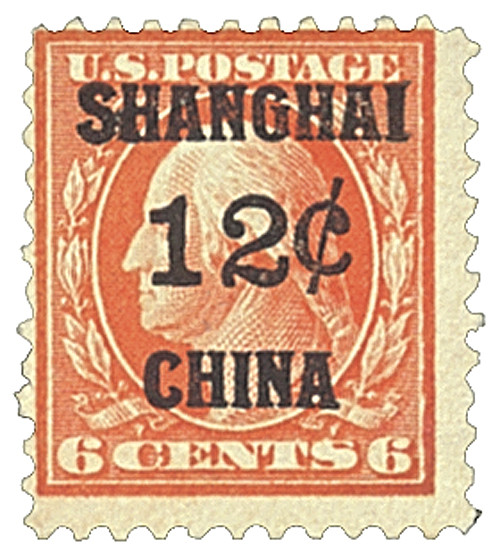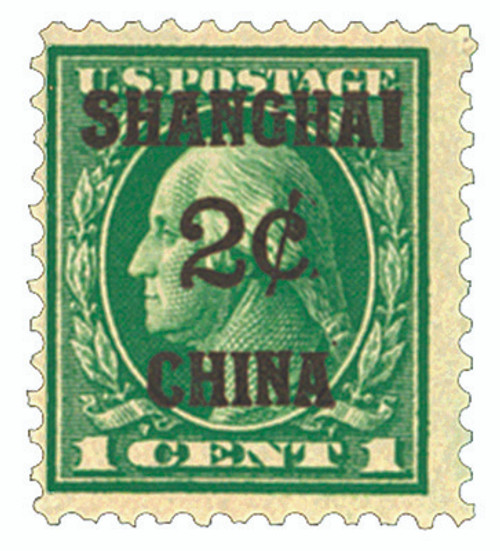
1919 6c on 3c Shanghai Overprint,violet
# K3 - 1919 6c on 3c Shanghai Overprint - violet
$59.00 - $155.00
U.S. Postal Agency in Shanghai
U.S. merchants began trading directly with China after the Revolutionary War, with much of the business conducted in the port city of Shanghai. After the First Opium War and the signing of the Treaty of Nanking, many American merchants began conducting their business directly from the region.
During this “Treaty Port” era, foreign postal services were organized through each country’s respective consulate. Mail to and from the U.S. was sent through our nation’s consulate in Shanghai. At first regular consular employees regularly stopped their duties to process mail, but a paid clerk was eventually hired.
At first, the U.S. Postal Agency accepted payment in U.S. currency only. Non-Americans had trouble sending letters via U.S. mail, which also hurt revenue. To complicate matters, the China-U.S. currency exchange rate was 2-1. To simplify the situation, a surcharge of two times the stamp denomination was added to U.S. #498-518. These overprinted stamps were then applied when postage was paid in anything other than U.S. currency.
U.S. Postal Agency in Shanghai
U.S. merchants began trading directly with China after the Revolutionary War, with much of the business conducted in the port city of Shanghai. After the First Opium War and the signing of the Treaty of Nanking, many American merchants began conducting their business directly from the region.
During this “Treaty Port” era, foreign postal services were organized through each country’s respective consulate. Mail to and from the U.S. was sent through our nation’s consulate in Shanghai. At first regular consular employees regularly stopped their duties to process mail, but a paid clerk was eventually hired.
At first, the U.S. Postal Agency accepted payment in U.S. currency only. Non-Americans had trouble sending letters via U.S. mail, which also hurt revenue. To complicate matters, the China-U.S. currency exchange rate was 2-1. To simplify the situation, a surcharge of two times the stamp denomination was added to U.S. #498-518. These overprinted stamps were then applied when postage was paid in anything other than U.S. currency.









